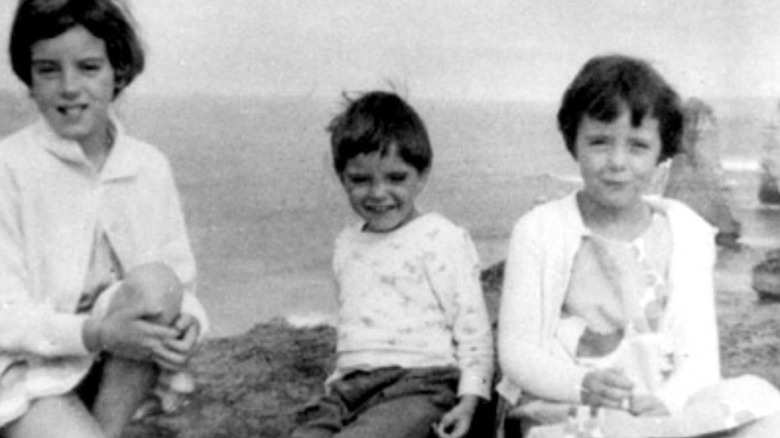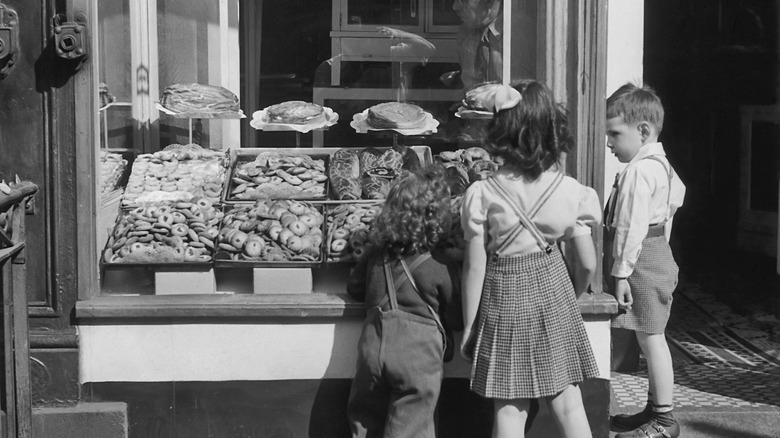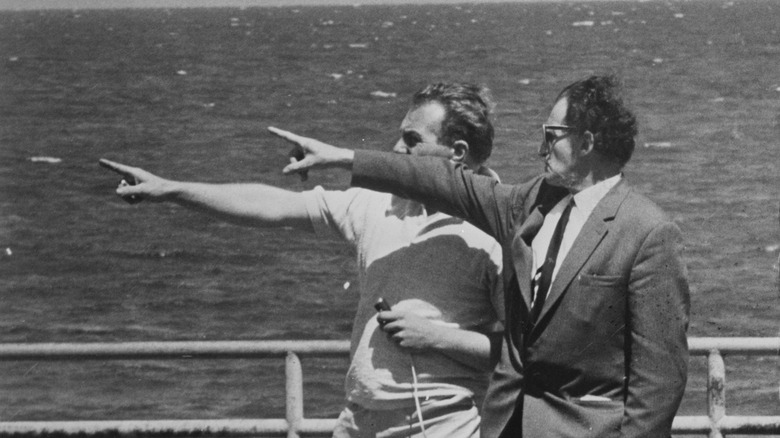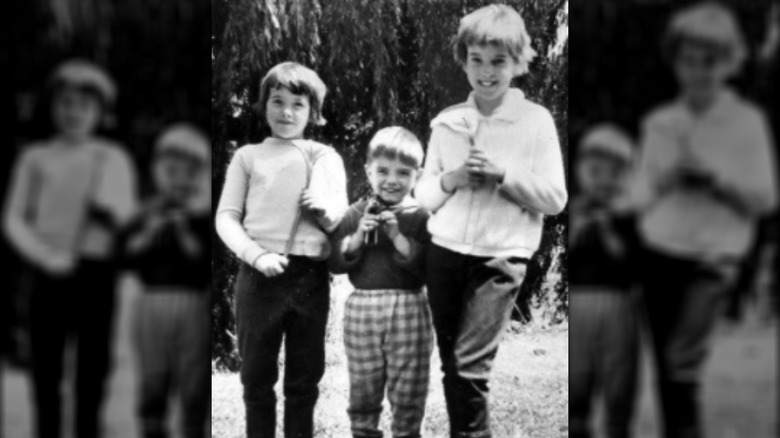The True Story Of The Disappearance Of The Beaumont Children
The story of a nearly six-decade-old triple missing person case is one of Australia's most harrowing tales. Despite books, movies, and podcasts created about the crime, no one knows for sure what happened to the three Beaumont children.
The Beaumont kids took a day trip to Glenelg Beach on "Australia Day," as News.com.au reports. The siblings, 9-year-old Jane, 7-year-old Arnna, and 4-year-old Grant, hopped on a bus to the local beach on January 26, 1966. The ride took about five minutes. They lived in an area that was regarded as a safe place for young kids to travel alone, which was commonplace in 1966. The concept of child abductions and "stranger danger" was not taught to kids, who were encouraged to be independent.
Within hours, Jim and Nancy, the parents of the Beaumont kids realized something was wrong (via All That's Interesting). The kids were supposed to be at the beach for just a few hours. They left their house to catch an 8:45 a.m. bus, and their parents expected them back home by 2 p.m. at the latest. The day began with a trip to the beach — and ended in a nightmare.
Three kids go missing
When Jane, Arrna, and Grant didn't return from the beach, around 3 p.m. on January 26, 1966, their father Jim began to drive around and search for the children (via All That's Interesting). He stopped by the beach, looked at the bus stop, and then began knocking on doors throughout their neighborhood, growing increasingly more worried. Jim and his wife, Nancy Beaumont, reported their three kids as missing around 7:30 p.m. that night. A $250 reward was offered for any information about the children's whereabouts.
Chilling information emerged about a tanned man of around 30 years old, who Arnna had previously jokingly called, "Jane's boyfriend" (via Strange Outdoors). The man, described as very tan with blond hair and wearing a Speedo, apparently spent time with the Beaumont kids at the beach on more than one occasion. But no one could identify who this mysterious man was. Witnesses said the kids were playing with a man at the beach the day they went missing, which the Beaumonts thought odd because Jane was normally shy and wary of strangers, adding to the theory that the children knew the man from previous encounters.
Last sightings
Per Strange Outdoors, the children were seen was at a nearby bakery around 12:20 p.m. the day they went missing, where Jane purchased two large sodas, nearly a dozen finger buns and pasties, and a meat pie. The shopkeeper who knew the children noted that the kids had never bought a meat pie before, and didn't usually buy such a large amount of food for a quick beach trip. The Beaumont kids usually were given just enough money for their bus fare and a lunch –- clearly, they had been given extra money by someone else.
The last time anyone saw the Beaumont children was around 1:30 p.m. (via Strange Outdoors). The father of one of their friends was driving by, and saw the siblings, along with three adults. He recognized one man who frequented a race track. He didn't know the other two adults: a blond male, and a woman wearing a blue and white dress with a "distinctive design." Their playmate's father thought it was weird that the kids weren't with their parents, and although he reported the tip to the police, they had been inundated with other tips and didn't follow up on the lead.
A massive search ensues
As All That's Interesting reports, witnesses from the beach had said that the Beaumont children had been hanging around with just one tall man in his thirties — and they appeared to be friendly with him already as if they had met several times before. Despite the many tips from witnesses, it was never determined how many people were involved in their kidnapping.
According to Crime Traveller, the search for the children was widespread, covering about 30 miles surrounding Adelaide. It was apparently the largest missing-persons search in Australian history. Spanning 36 hours, the police force, Navy, Airforce, Marines, and concerned citizens all searched frantically for the kids. They inspected storm drains, checked the rocks along the beach, and dived in a nearby marina, which they drained one week later to be certain the children were not there. Search parties scoured the land nearby for freshly turned earth that could signal a gravesite. Unfortunately, there were no signs of the Beaumont siblings.
In November of 1966, per All That's Interesting, police contacted a clairvoyant who claimed to know where the children's bodies were buried. The man, Gerard Croiset, said that the kids were buried inside a warehouse kiln. The town raised $40,000 together in order to excavate the site — which took an entire year to dig through. With television cameras rolling, authorities were forced to admit that they hadn't found any new evidence or remains.
Prime suspect
Two years later, in 1968, police investigated a tip that the kids had been spotted on the Mud Islands of Victoria, and an entire freighter crew was questioned (per All That's Interesting). Another promising lead came from a woman who claimed that in 1966, she lived next door to the kidnapped siblings for nearly a year. She lived in a remote town, but police couldn't gain any additional information from her account.
Per Crime Traveller, one suspect who stood out to investigators was Arthur Stanley Brown. He was charged in 1998 with murdering 7 and 5-year-old MacKay sisters in 1970, and eight other family members and stepchildren subsequently accused him of sexual assault and rape. Another two children, Joanne Ratcliffe and Kirste Gordon, were kidnapped in 1973 from a football game in North Adelaide. Brown was the main suspect in this crime, and the crime sketches at the time are a nearly identical match.
Digging for clues
Brown's job was at the Department of Public Works, where he was unsupervised and had vast access to public buildings, which would give him ample opportunity to plan and execute kidnappings. As Crime Traveller notes, the circumstantial evidence against Brown is difficult to refute, and many officials believe he was responsible for the Beaumont kidnapping.
Tips about the children continued to roll in throughout the following decades as the case grew colder and colder. All That's Interesting reports that in 2013, two men claimed that they had been paid to dig a ditch on that fateful day in 1966, but the grave didn't contain human remains. Investigators have questioned many known pedophiles and criminals in the area as recently as 2016, but turned up zero evidence about the kids.
Tragically, Nancy Beaumont died in 2019 without ever reuniting with her children, as Strange Outdoors reports. Jim Beaumont is still alive at the time of this writing. Today, the reward for information about the missing Beaumont children has reached $1 million. One of Australia's coldest cases broke the heart of the nation, and still, it remains unsolved.





